The 45 ACP is legendary. It was the first cartridge adopted by the U.S. military for an automatic pistol, and both the cartridge and the M1911 handgun served that role for 74 years. “The 45,” as some call it, is a heavy hitter born out of necessity and from the mind of the greatest cartridge and gun designer in history, John Moses Browning.
The 45 ACP (which stands for Automatic Colt Pistol) was first introduced in 1905, and shooters of all stripes have loved and adored the cartridge for well over a century. It made every other pistol cartridge on the market at that time look pathetic. It was, and still is, the most potent military handgun cartridge ever.
John Browning’s Colt M1911 pistol chambered in 45 ACP was officially approved by the Secretary of War Jacob Dickinson on March 29, 1911, and became the U.S. military’s official service sidearm.
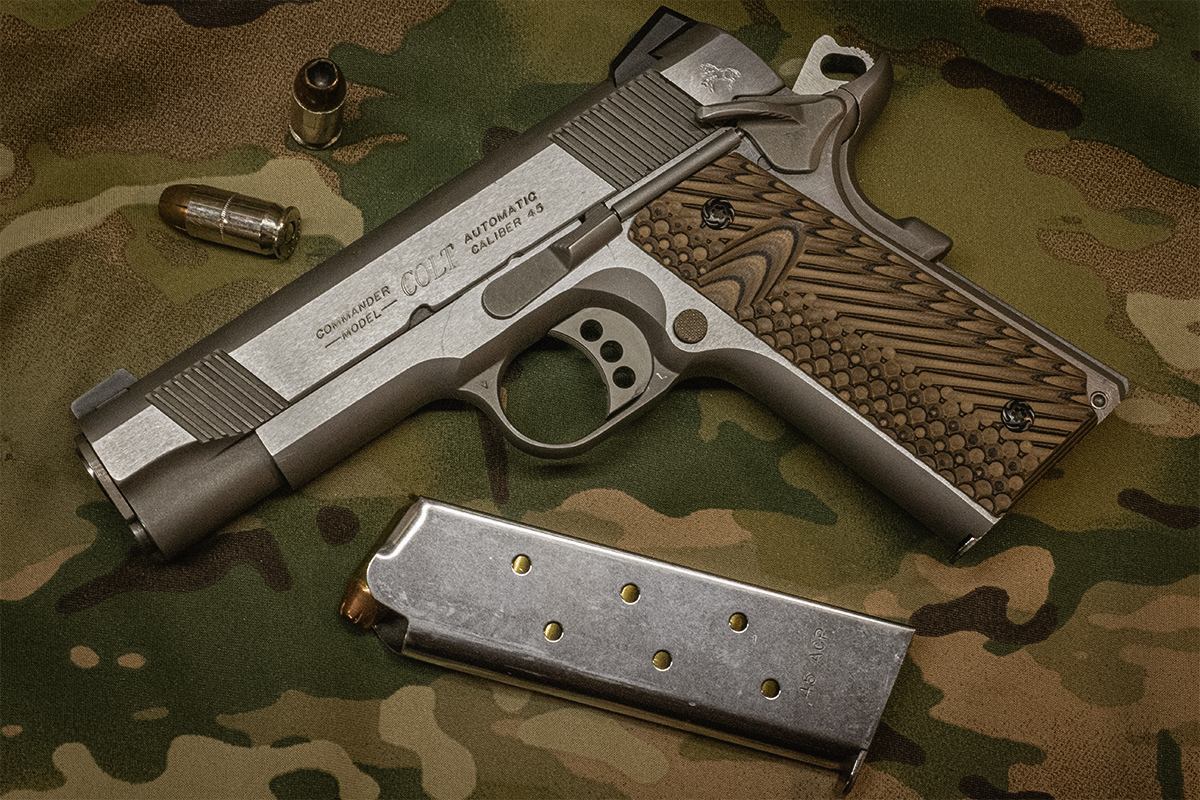
In WWI, Sgt. Alvin York famously downed six charging Germans with one magazine from his 1911 pistol, which held seven rounds of 45 ACP. He picked off the group from back to front — the way he preferred to shoot ducks in Tennessee. Because of what he did, York’s 17-man unit captured 132 enemy prisoners. York was ultimately awarded the Medal of Honor for his actions.
Throughout its service life, the 45 ACP was revered by U.S. combat troops for its excellent stopping power. It served in the trenches of WWI, in both theaters of the Second World War, in the frigid cold of Korea, in the jungles of Vietnam, and in countless other conflicts in between. While the U.S. military moved on from the 45 and the 1911 in the 1980s, both are still popular among civilians, and the 45 is still used by many military forces around the world.
GOOD GEAR – Celebrate Military Heritage With the BRCC Gunship Roast
The History of the 45 ACP
The timeless “45” goes by many names; The 45 Automatic Colt Pistol, 45 Automatic, 45 Auto, or simply “the 45.” Like all good things in the firearms world, the 45 ACP was the brainchild of John M. Browning.
The cartridge was born out of necessity: At the dawn of the 20th century, the U.S. military needed a more powerful handgun. During the Spanish-American War and Philippine Insurrection, troops found their revolvers chambered in the anemic .38 Long Colt simply wasn’t powerful enough. It would take multiple hits from the Colt revolvers to take down an armed combatant, and the rounds often couldn’t penetrate thick jungle foliage.
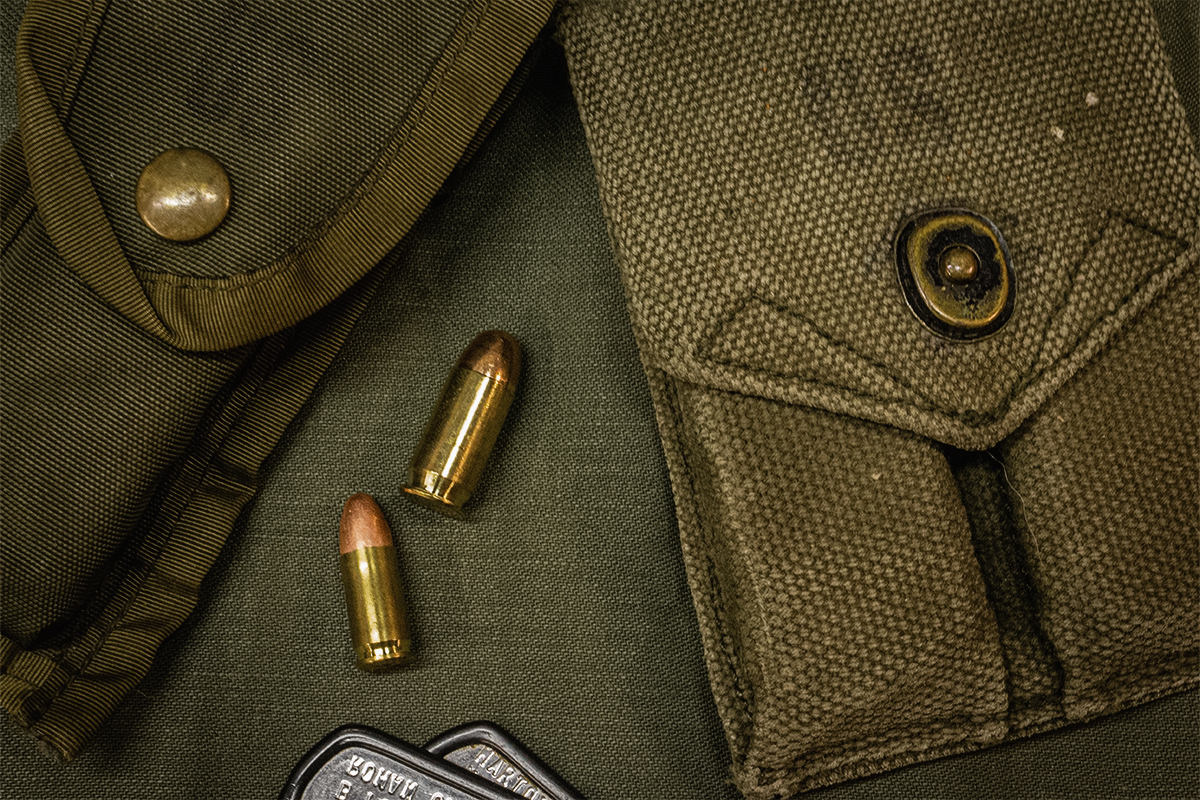
In 1905, Browning brought something to the table that grabbed the attention of everyone who shot it: a .45-caliber pistol cartridge fired out of an autoloading handgun. At the time, autoloaders were fairly fragile due to their fairly delicate, unreliable mechanisms and were consequently often chambered for weak cartridges. The 1911 and the 45 changed all that.
The 45’s ballistics were even better than the classic .45 Colt (aka .45 Long Colt) cartridge that had dominated the West and aging ordnance officers had a soft spot for. The new .45-caliber cartridge was smaller, used less powder, and was more potent than the old .45 Colt.
The round wasn’t adopted by the U.S. Ordnance Department until 1911 when it also adopted the timeless Browning-designed Colt 1911 pistol. Soon after, the legendary Thompson submachine gun hit the scene, also chambered in the powerful new 45 ACP. Decades later during WWII, the inexpensive and simple-to-manufacture 45 ACP M3 submachine gun, aka the Grease Gun, was built and issued in huge numbers. It stayed in service for decades, even seeing use by M1 Abrams tank crews during Desert Storm in the 1990s.
The 45 ACP remained the primary handgun cartridge of the U.S. military until 1985 when the 9x19mm cartridge and the Beretta M9 pistol phased out the 1911. The 45 ACP still sees use among smaller units within the military, but it no longer holds that coveted primary role. The last military 45 ACP pistol contract was for the Marine Corps M45A1 in 2012, most of which have been retired. Although the end is in sight for U.S. military use, it continues to be popular in the civilian world for competition shooting and self-defense.
RELATED – The Elon Musk Guns: What We Know So Far
45 ACP Ballistics: Slow and Heavy Wins the Race?
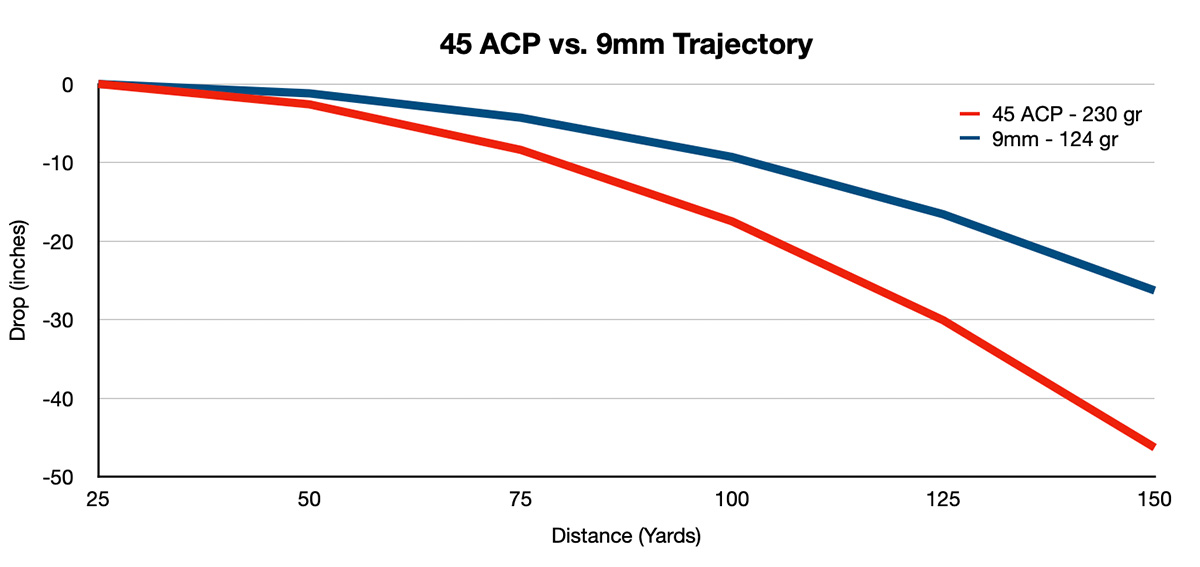
Ballistically, the 45 ACP is the definition of slow and heavy. The classic mil-spec load was a 230-grain .451-inch diameter Full Metal Jacket (FMJ) bullet moving at a shockingly slow 855 fps. It’s basically a little cannonball moving through the air. Comparatively speaking, the 9mm NATO load uses a 124-grain FMJ bullet with a muzzle velocity just shy of 1,200 fps.
The 45 ACP’s velocity is slow compared to other pistol calibers, but that has proved advantageous in modern times. Since the bullet doesn’t break the sound barrier, it is inherently subsonic. This makes it ideal for use with suppressors in a handgun, subgun, or carbine without using special subsonic loads to make it ultra-quiet.
Ammo makers top the 45 ACP with bullets ranging from light 118-grain polymer-copper blends to heavy-as-balls 305-grain cast lead. The most popular weights range anywhere from 185 to 230 grains. The 45 ACP punches with 373 ft-lbs. of energy using the 230-grain military loading. A 185-grain bullet with a velocity of 1,050 fps hits with 453 ft-lbs. of energy.
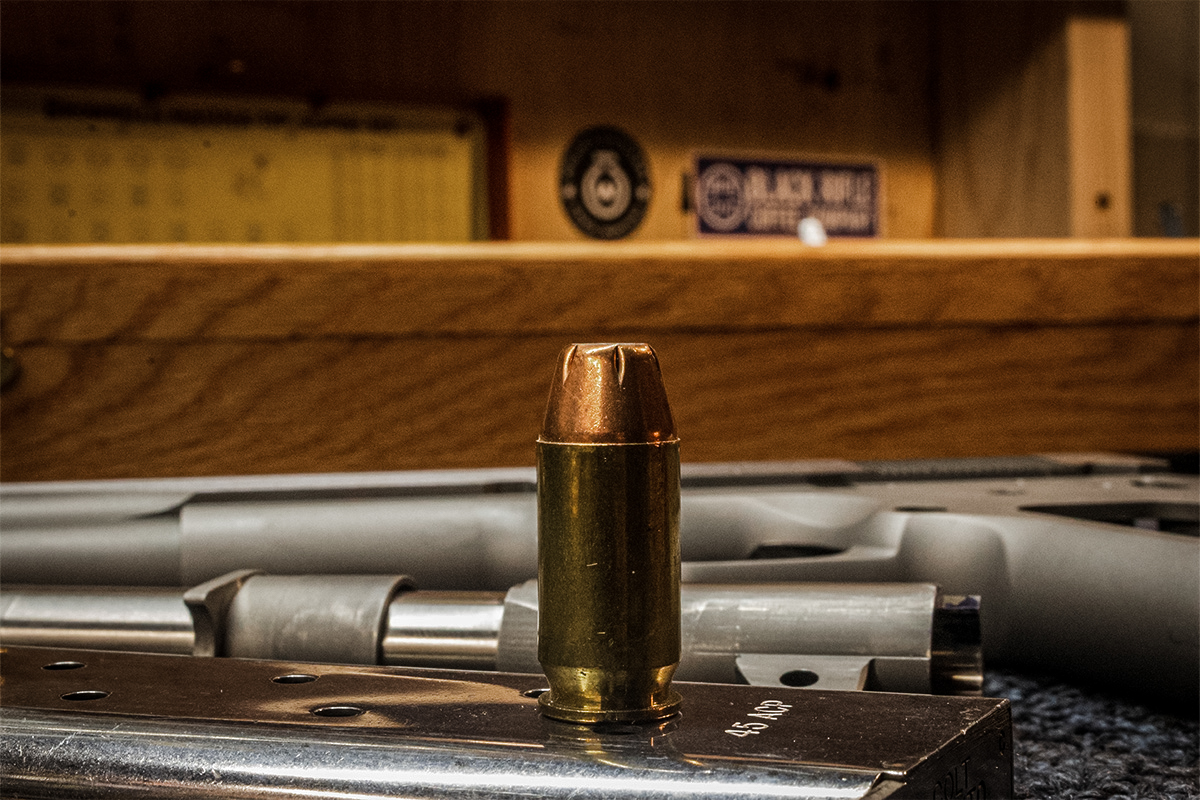
The trajectory of the 45 looks very similar to a rainbow. When sighted in at 25 yards and fired out of a pistol barrel (5 inches), the 45 ACP drops 8.4 inches by the time it reaches the 75-yard mark. At 150 yards, that same bullet drops nearly 4 feet!
The 9mm’s lighter and faster bullet drops about half as much as the 45 at those same distances. Most pistol shooters aren’t too worried about trajectory, though, as most handgun shots will be taken within 25 yards.
So what is the 45 ACP good for? The 45 ACP remains an excellent option for self-defense, even after all these years; its knockdown power is challenged only by the 10mm. Self-defense ammunition for the 45 is available everywhere, and many great options exist. While there are some drawbacks to carrying a 45 ACP, like the fat cartridge limiting magazine capacity, it can be considered one of the better options for self-defense.
GOOD GEAR – Stay Warm in Cooler Weather With the BRCC Texas Freedom Flag Blanket
9mm vs. 45 ACP: A Heated Debate
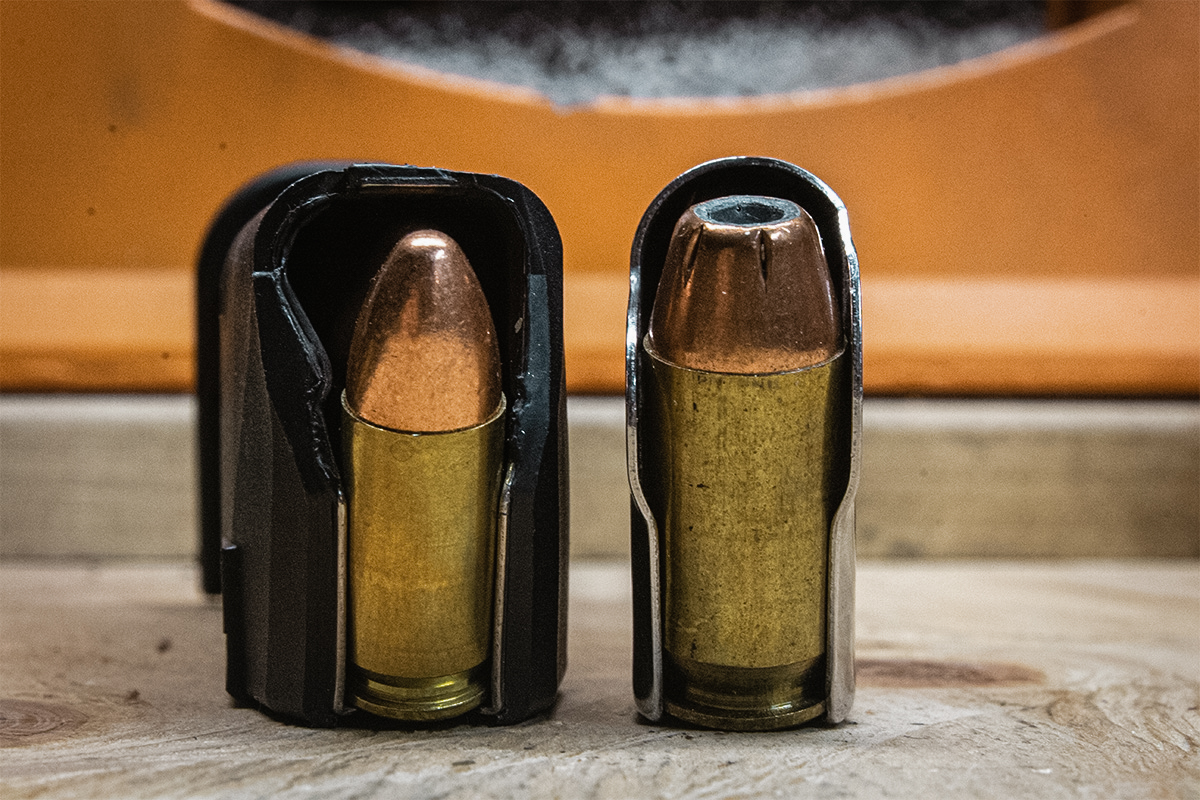
Sex, politics, religion, and 9mm vs. 45 ACP are all things that should be avoided at family gatherings, or at any gathering where you don’t want a fight to break out. There is no more contested subject in the gun world. Arguments about carrying capacity, lethality, and knockdown power — and whether knockdown power is even a thing — rage endlessly, mostly online.
So how do they truly stack up against each other? Over the last couple of decades, the 9mm has won the overall popularity contest among concealed carriers, law enforcement, and the military. With modern advances in bullet design, the 9mm has become an excellent option for self-defense. Add that to the many new high-capacity compact carry guns, such as the SIG Sauer P365 XMACRO, and it’s easy to see why the 9mm has pulled ahead. There’s no getting around the case diameter of the 45 and that it severely limits magazine capacity and often requires a handgun to have a bulkier grip compared to 9mm pistols.
Is the 45 ACP weaker than the 9mm? If speaking strictly from an energy perspective, the 45 ACP’s heavy bullet outperforms the 9mm. However, energy is a poor way to compare these two, as bullet design is way more important. When shooting both side by side at a steel plate, it is hard not to smile when that slow 230-grain bullet hits.
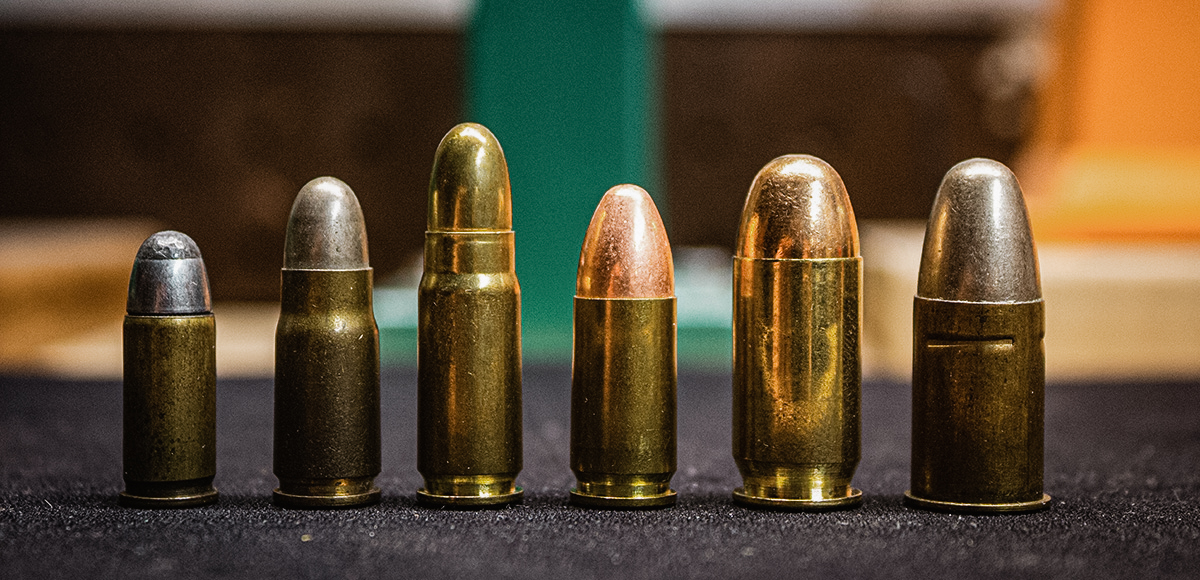
Many believe the 45 ACP is more lethal than the 9mm, but that’s not entirely accurate. The first question is, what are you using it for? Much less penetration is needed for self-defense in an everyday carry scenario. Both calibers are equally lethal here. If carrying in the woods for defense against bears, a lot more penetration is needed to reach the vitals. The smaller-diameter 9mm has a better chance of reaching those vitals if the right bullet is used. As a general rule, you don’t want to be shot by either.
Some find the softer, thuddy recoil of the 45 easier to control, especially in light handguns, than the snappier 9mm. That means they shoot it better, and as we all know, shot placement is the most important factor in any shooting situation.
And then there’s the cost to consider; 45 ACP factory ammo does cost more than 9mm, simply because each round requires more material and a larger primer. In comparison, both can be found on the shelves with relative ease. For the 45, you can expect to spend about $0.13 to $0.30/per round more for target and self-defense ammunition than you would for the 9mm.
RELATED – 44 Magnum: The Most Powerful Handgun Cartridge, for a While
45 ACP Handgun Options
You can’t talk about the 45 ACP without talking about the 1911, and Browning’s pistol remains one of the most popular handgun platforms for the round. Today there are countless 1911 options available, but there are also a ton of other options for the 45 faithful.
The 1911
MSRP: $709
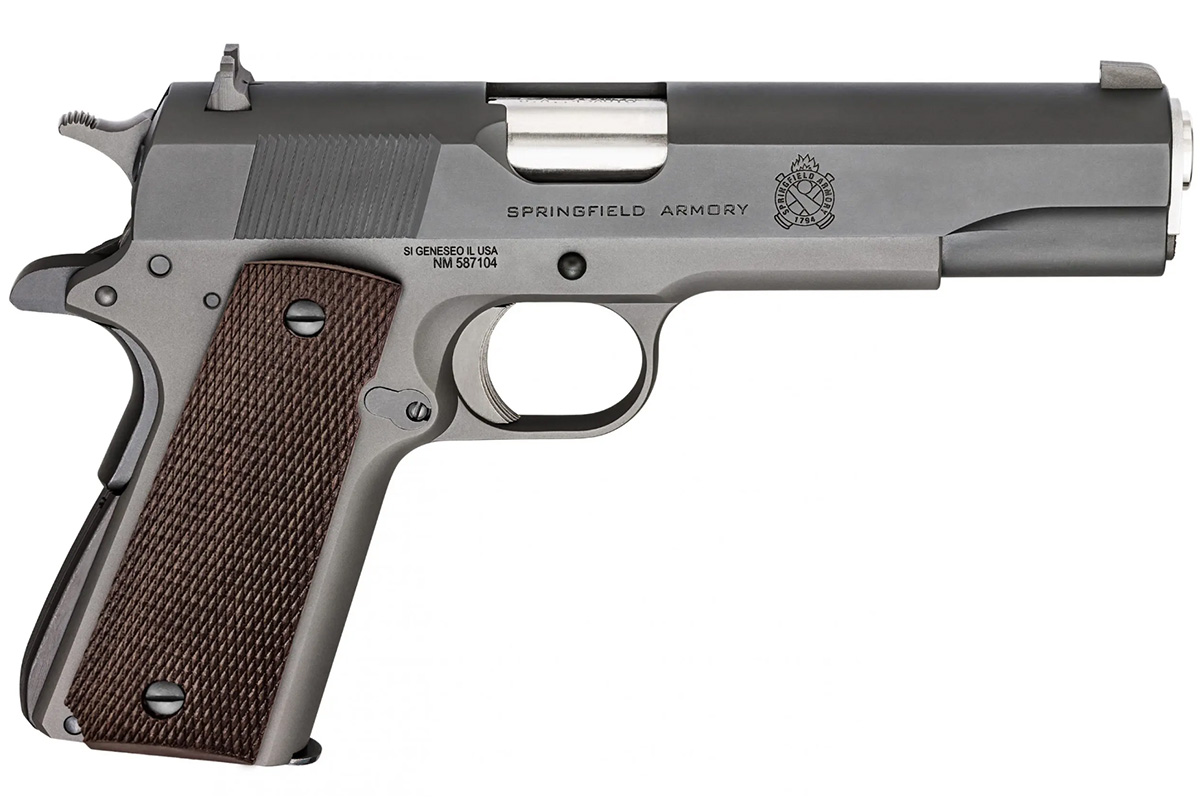
The 1911 is the original platform for the 45 ACP and still holds a big part of the market share for a good reason. The exposed hammer, a straight-pull, single-action-only (SAO) pistol, has a trigger that can’t be beaten by any other pistol. Multiple safeties back up its light and crisp break to ensure it doesn’t go off unless you want it to. A John Browning design that was the primary sidearm for the U.S. Armed Forces from 1911 to 1985, nothing feels quite like an all-steel 1911 in hand. There are many on the market today from many gunmakers, but the Springfield 1911 Mil-Spec is a great example of a truly classic 1911.
The Glock
MSRP: $655
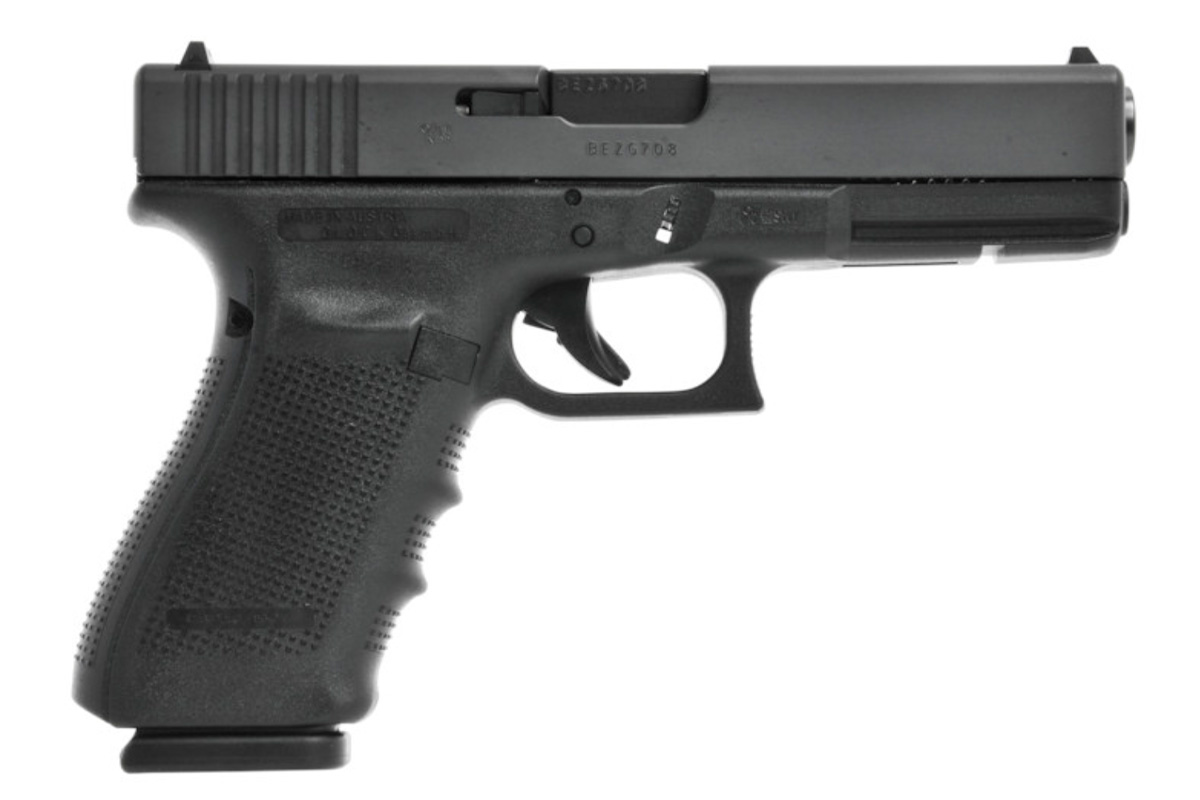
Glock makes multiple models of its infamous design chambered in the 45 ACP. The G21, G30, G36, and G41 are all chambered for the 45. With each of these models, you get all of the features that so many people love about the polymer-framed Glock in a package built for the 45. For those Glock 17 fans, the G21 is of equivalent size with a capacity of 13 rounds of 45 ACP.
The FNX-45
MSRP: $1,379
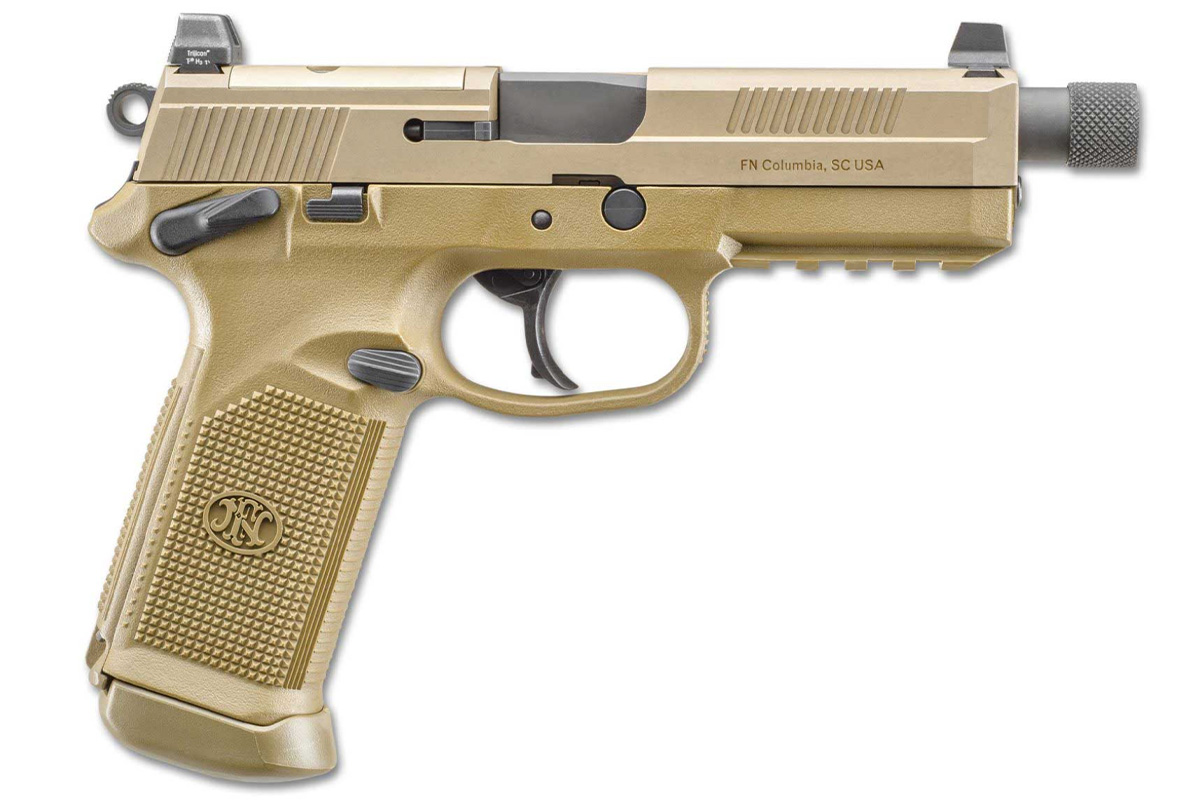
The FNX-45 is a polymer-framed, double-action/single-action design that holds 15 rounds of the mighty 45. It comes suppressor ready with high-profile night sights and a threaded barrel. This is a full-sized handgun that is as soft shooting as a 45 ACP gets. But it’s a dream to shoot and packs a punch.
The HK Mark 23
MSRP: $2,639
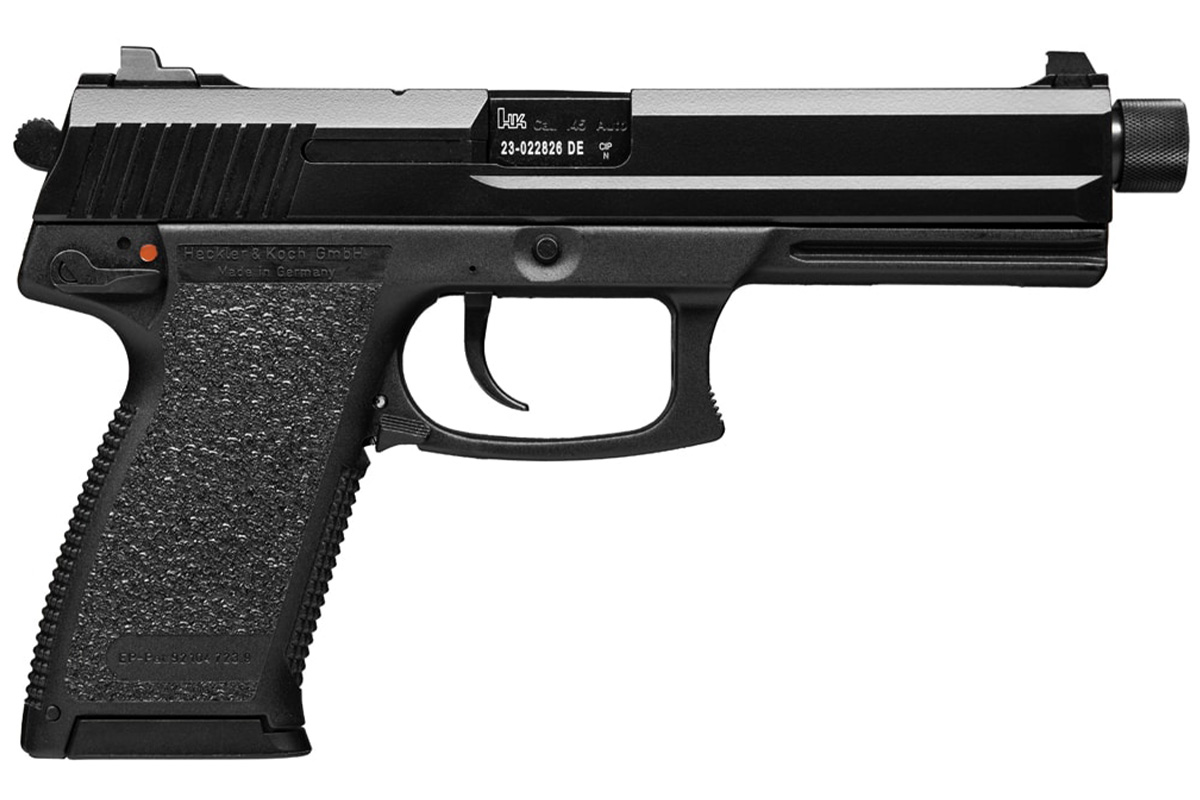
The Heckler & Koch Mark 23 was made famous by its use with the U.S. Navy SEALS. This full-sized handgun holds 12 rounds and is set up to be suppressed from the get-go. It is both double action and single action and has been battlefield proven. In true H&K fashion, it is the most expensive handgun on this list.
GOOD GEAR – Ditch the Ancient Grog Cup With the BRCC Blackbeard 2.0 Mug
Why Choose the 45 ACP?
The 45 ACP is a classic that is undoubtedly powerful enough to handle any task that requires a handgun. Today, the 9mm has many advantages over the 45 ACP, but that doesn’t make the 45 obsolete. If living in a magazine capacity–restricted state, the 45 is an excellent option as you will be throwing more lead downrange than a 9mm of the same capacity.
If you are interested in an ultra-quiet suppressed pistol, the 45 ACP is the best option on the market as it is subsonic no matter what ammo you use. This applies to handguns, pistol-caliber carbines, and subguns.
The 45 ACP isn’t going anywhere anytime soon. It is still an excellent defense option a century after it was introduced. With the continued advances in bullets, powder, and ammunition, it is exciting to think about how the old 45 will evolve in the coming years.
READ NEXT – New S&W PC M&P9 M2.0 Competitor Pistol Came To Win



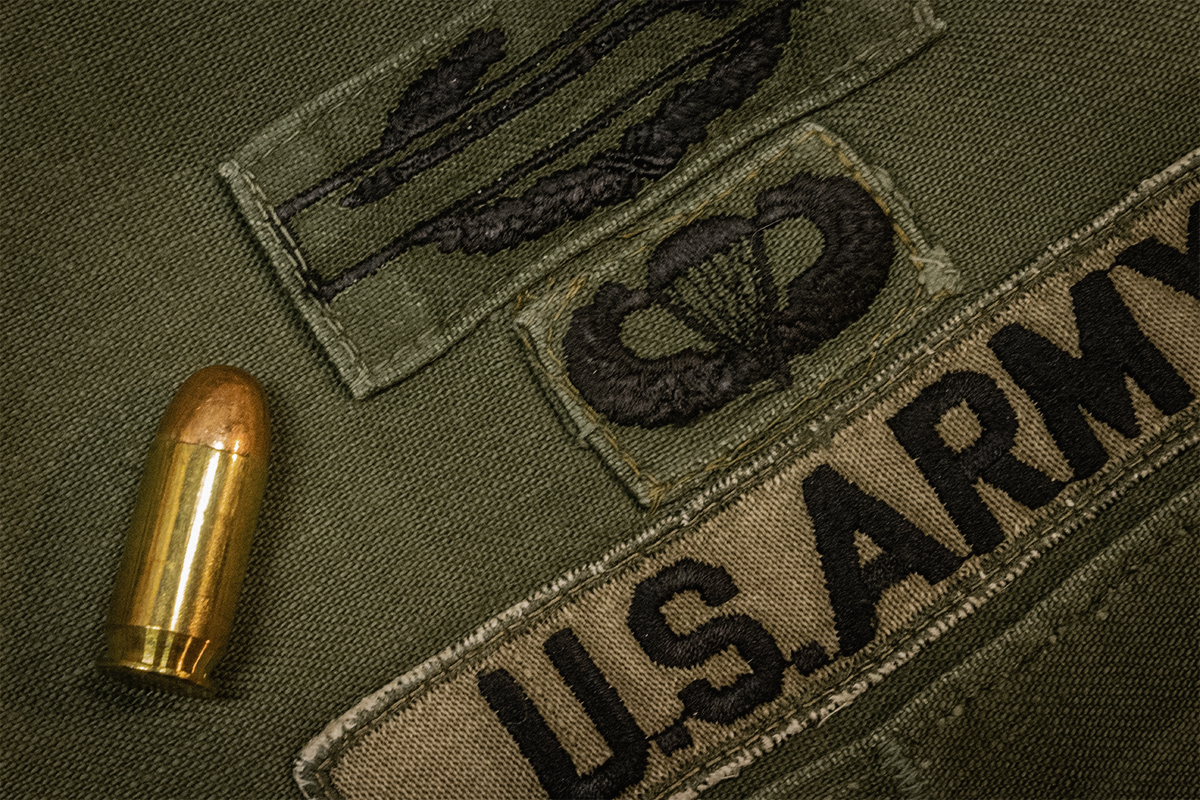

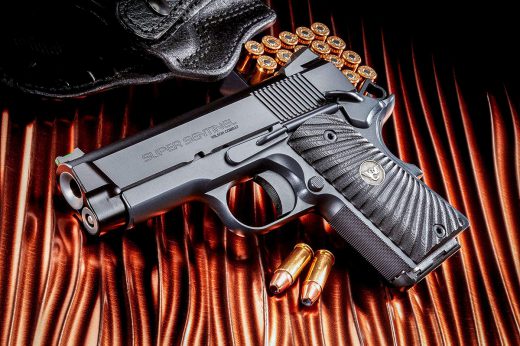
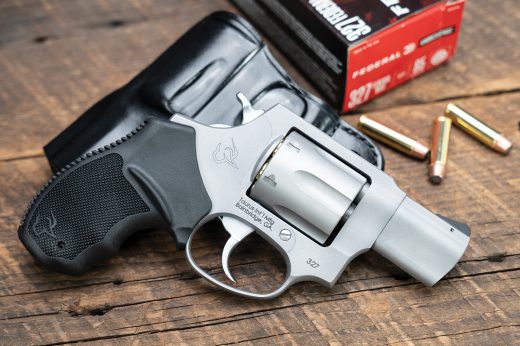
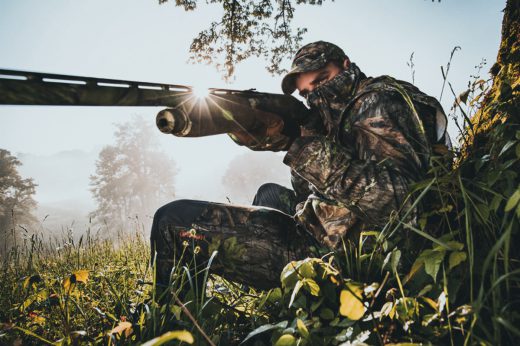


Comments